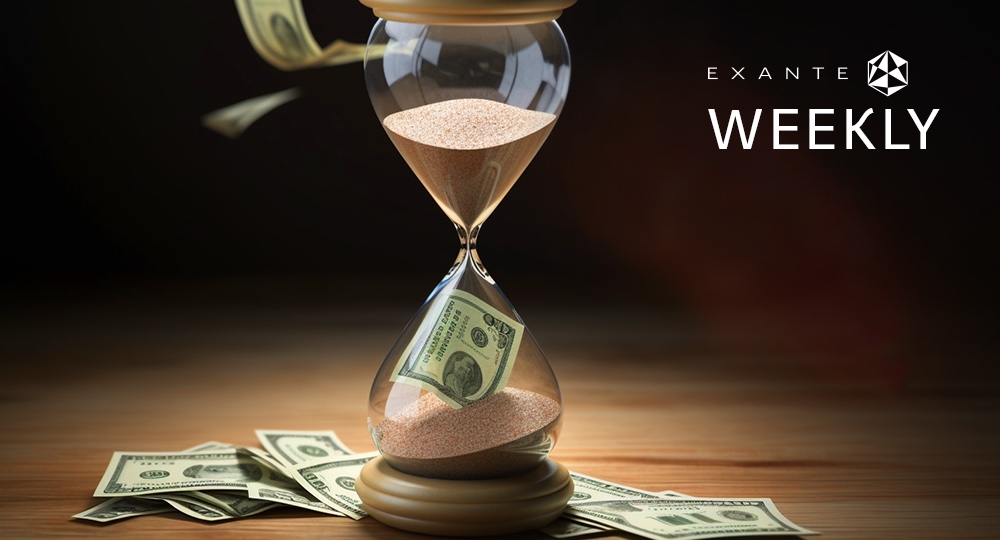- The first half 2025 has seen significant moves in global bond yields due divergences in monetary policy, with Europe leading on rate cuts, to the introduction and then delay of full US tariffs, a rise in Middle East tensions associated with the Israel-Iran war, growing concerns around fiscal policy, debt levels and debt sustainability in the US and the UK, and Europe‘s ambitious defence spending with an expected increase in issuance.
- June saw US Treasuries gaining for over three weeks as markets continued to expect a quicker pace of monetary policy easing as more dovish talk from some Federal Reserve officials was heard amid softer economic data, including a downward revision to Q1 GDP growth, a further slowdown in home sales, and a rise in jobless claims. The Fed’s own projections indicate two more cuts this year. However, the Fed is still expected to hold rates at its next meeting on 29-30 July despite increasing pressure from President Trump to cut rates to 1%. Last week Fed Chair Jerome Powell told Congress that ‘increases in tariffs this year are likely to push up prices and weigh on economic activity.’ He also said that inflation from tariffs could be temporary, or it could lead to a more persistent bout of inflation. ’Powell suggested the Fed would monitor how the economy evolves over the summer before deciding whether to cut rates.
- Fed funds futures traders are anticipating 47.7 bps of rate cuts this year. According to the CME FedWatch Tool, there is a 20.2% chance of a 25-basis-point cut at the July meeting. A rate cut is now expected at the FOMC 17th September meeting with a 75.9% probability that the Fed will ease by 25 bps at that meeting.
- The dollar has had the worst YTD since 1973. The dollar experienced significant fluctuations throughout June with the dollar index - 2.47% MTD, -7.04% QTD, and -10.70% YTD.
- The US labour market, while slowing, is continuing to show strength despite policy uncertainties. The jobless claims 4-week average in June was around 245,000 and continuing claims reached their highest since November 2021. The Fed’s favourite inflation gauge, the Core Personal Consumption Expenditures (PCE) Price Index, came in at 2.7% in May, slightly up from April’s 2.6%. Consumer spending, which accounts for more than two-thirds of US economic activity, fell 0.1% in May after an unrevised 0.2% gain in April. Headline inflation rose by 0.1% m/o/m in May, down from April’s 0.2%, while core CPI, excluding food and energy, was at 0.1% and 2.8%, respectively, compared with forecasts for 0.3% and 2.9%. Real average hourly earnings grew 0.3% from April to May and 1.4% y/o/y. The labour force participation rate fell slightly in May to 62.4% from April’s 62.6%, and the employment-population ratio declined by 0.3% to 59.7%. However, markets will be looking closely at June's nonfarm payroll report, due to be released on Thursday in advance of the 4th of July holiday in the US. According to a Bloomberg poll, job creation is forecast to ease to 120,000, down from 139,000 the prior month while unemployment is expected to have edged up to 4.3% from May’s 4.2%.
Questo articolo viene fornito all'utente soltanto a scopo informativo e non deve essere considerato come un'offerta o una sollecitazione di un'offerta di acquisto o di vendita di investimenti o servizi correlati che possono essere qui menzionati.






